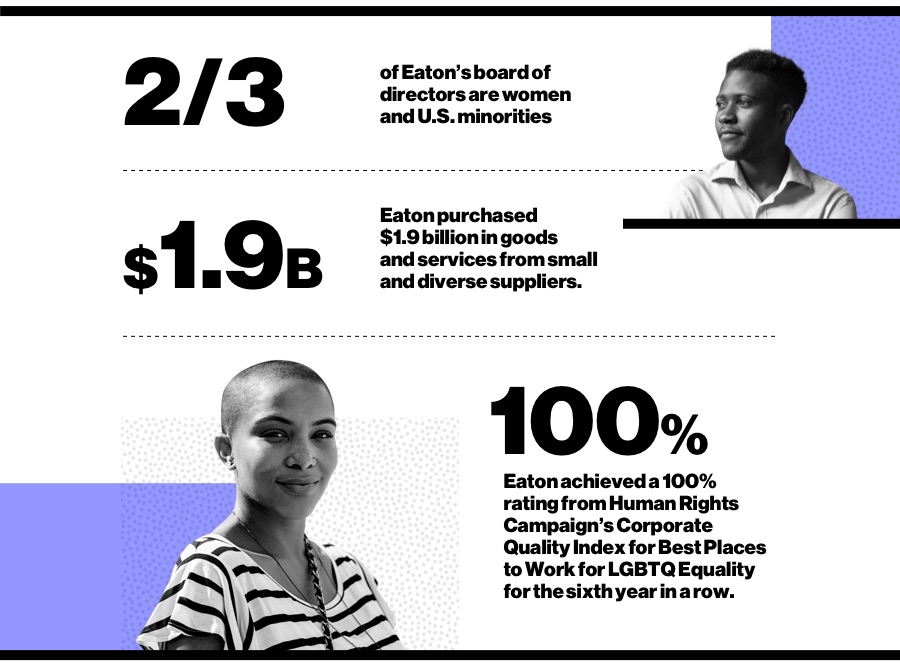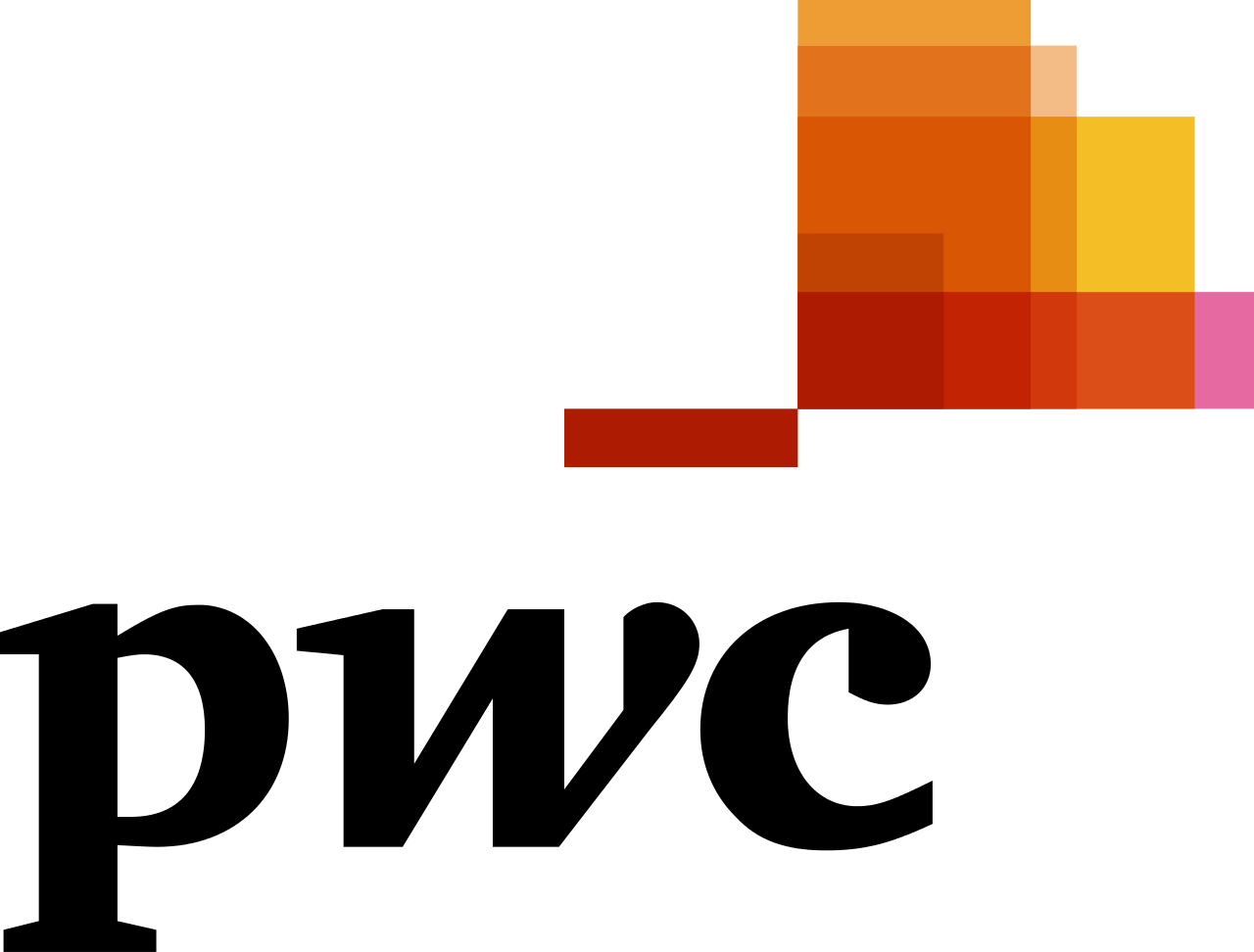The Power of Inclusion and Diversity in the C-Suite
In July 2018, Ernest Marshall joined Eaton as the Chief Human Resources Officer after serving in a similar role at GE Aviation. A major reason for Marshall’s move to the power management company was Craig Arnold, Eaton’s CEO and one of a handful of African Americans who lead Fortune 500 companies. Two years later in the aftermath of the murder of George Floyd by a white police officer in Minnesota, Marshall, who is also African American, witnessed Arnold’s leadership through a period of crisis in U.S. race relations not seen perhaps since the Civil Rights movement of the 1960s.
“I could tell that this was deeply personal for Craig, but at the same time he personalized the moment and the message for Eaton,” Marshall says. “He balanced his lived experience with his role as CEO and shared it with the company so that the whole organization could rise.”
The experience showed Marshall the power of having diversity at the leadership level.
“Diverse people have this antenna that says, ‘Let's hire more diversity.’ It's not in spite of anybody else, it's to make everybody else better,” Marshall says. “What was so profound for me working with Craig on this one is, I could just see it in his eyes like this shouldn't be happening in 2020, but we have a responsibility, and that is, to ensure that the future is better.”
But Marshall’s team didn’t immediately respond to the murder of George Floyd with bold pledges or polished PR statements. Instead they took more time to ensure that Eaton’s actions to advance racial equality and promote inclusion at Eaton and beyond would have a lasting impact.
“We just hit the pause button because we wanted to know that whatever we do has a profound impact on racial equality 18 months from now,” Marshall says. “Because I want to look myself in the mirror and say, ‘We did this and it drove real sustainable change.’ That's what's important to me and that's the beauty of having a CEO like Craig—he challenges you to drive real and impactful outcomes.”
How to build and sustain diversity and inclusion
Eaton aspires to be a model of inclusion and diversity in the power management industry. This work begins by making inclusion a priority.
“Once you have a diverse workforce, what's really important is how inclusive it is,” Marshall says. “Because if it's not an inclusive place, you can bring the people in but they won't stay. Build an inclusive culture where people’s ideas and experiences and perspectives are magnified, then the whole organization flourishes. When we respect and value the differences that people bring to the organization, we win in the workplace and that translates into winning in the marketplace.”
The company, which is headquartered in Dublin, Ireland, and has offices in Cleveland, Ohio, has been making strides in inclusion and diversity at all levels of the company. Last year it reached a milestone. By the end of 2020, 50 percent of the board of directors were either women or U.S. minorities, and U.S. minorities comprised 54 percent of the global leadership team.

Marshall is proud of these numbers but cautious about how the company can sustain them over the long term.
“You can't get comfortable or complacent because when I look in the organization, I want to know whether I can sustain it in the next two succession cycles,” Marshall says. “Honestly, I'm not sure I can. And so, while I'm thrilled at the progress we made and the intentionality of that progress, we really have to be focused on how we can sustain that level of diversity moving forward.”
The essential role of social responsibility and community service
For Eaton, social responsibility and community service are cornerstones of their inclusion and diversity strategy. In Cleveland, 50 percent of the city’s metropolitan school system didn’t have internet access during the height of the Covid epidemic when students were homeschooling. In April in East Cleveland, a predominantly Black and low-income suburb, Eaton joined state authorities, PCs for People, the Microsoft Airband Initiative and GE Lighting to finance a $650,000 broadband expansion that will provide affordable, high-speed internet to as many as 2,000 households.
“To think there were kids during Covid sitting in a McDonald's parking lot just so they could access Wi-Fi and do their homework,'' Marshall says, “This should not be something that happens in the United States of America. That's why we’re working to make our communities stronger, by advocating for young people and addressing inequalities. This has to be our collective mission.”
A second chance for formerly incarcerated workers
At Eaton, nurturing a strong community workforce includes its “second chance” hiring program, which brings formerly incarcerated individuals into the company at all levels.
According to a recent Bloomberg report, employers are hesitant or unwilling to hire those with criminal records, despite the labor shortages that have occurred since the start of Covid epidemic in 2020. While many companies have accelerated their hiring of these workers to build their workforces to sustain their businesses, Eaton views its second chance program primarily through the lens of social responsibility.
“Sometimes those people pay the price for whatever they've done two or three times, and can't really get back on their feet,” Marshall says. “A part of what we're trying to do is clear the way for people to come into the organization who have paid their price to society and restart. I'd say the majority of people who apply and want to start their life over are really good candidates.”
Listening Circles
Since Arnold signed the CEO Action for Diversity & InclusionTM pledge in 2017 to support more inclusive workplaces, Eaton has accelerated this work launching a variety of listening circles and ally advocacy circles led by Inclusion Eaton Resource Groups (iERGs). These critical and courageous conversation allow leaders and employees across the company to discuss inclusion and diversity. CEO Action for Diversity & InclusionTM is a coalition founded in 2017 on a shared belief that diversity, equity and inclusion is a societal issue, not a competitive one, and that collaboration and bold action from the business community—especially CEOs—is vital to driving change at scale.
Launched in 2014, Eaton’s eight iERGs grew to more than 10,500 employees in 2020. In the ally advocacy circles, which are primarily focused on women, the gender- balanced facilitators lead a one-hour intimate dialogue to talk about the experiences and potential barriers and inequities that women have in the workplace.

“One of our leaders in Europe was co-facilitating one of these sessions,” says Monica Jackson, Eaton’s Vice President of Inclusion and Diversity. “He says after he had the session he went home and he asked his three daughters, ‘Tell me about what you are experiencing at work.’ He says he never had that discussion before. He says they just started sharing with him.”
After the murder of George Floyd, Eaton’s African American employee resource group brought the company together to talk about racial inequality in the United States. They shared their experiences in a public forum that had thousands of employees in attendance. They now have monthly listening circles.
“It's called a listening circle for a reason,” Jackson says. “We ask our leaders to listen 80% of the time. This can be a challenge for leaders who are accustomed to driving the conversation, but what we want them to do is actively listen to the experiences, the lived experiences of these employees, so that they understand.”
Header photo by Roger Mastroianni.
